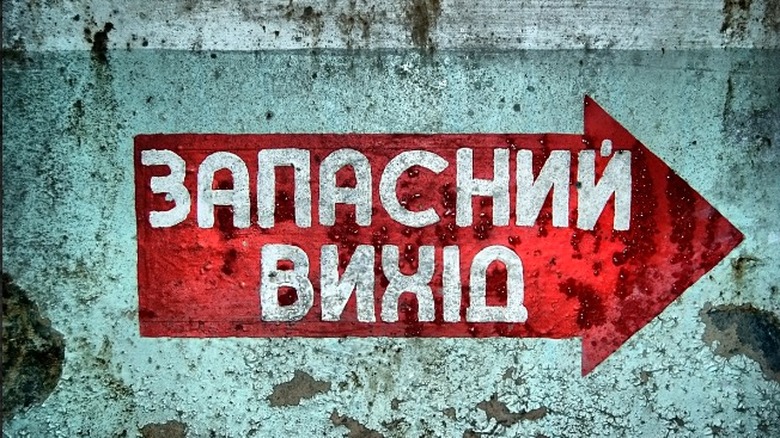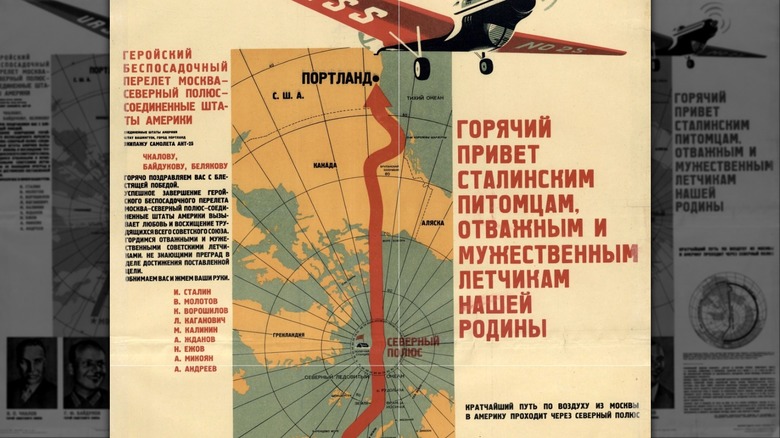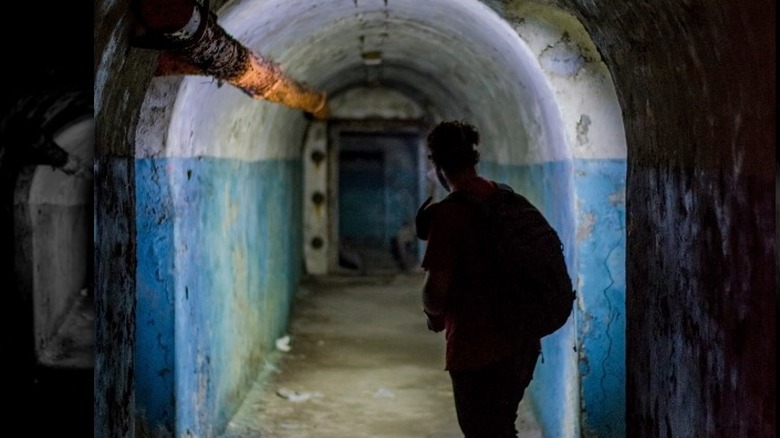Inside The Eerie Abandoned Underground Soviet City Under Tbilisi
Beneath the Georgian capital of Tbilisi, the remnants of Stalin's former rule creeps like a skeleton of the town. When Georgia became the Georgian Soviet Socialist Republic in 1921, it was destined to fall under the role of its very own home-grown despot expatriate himself. Joseph Stalin, a characteristically paranoid lover of secret police forces, appointed Laventiy Beria as chief in 1934. According to My Modern Met, Georgia Today, and prevailing rumor, the elaborate system of crumbling underground infrastructure may have been his work.
Photographer David Tabagari shone light upon the majesty of Tbilisi's eerie underworld with a series of photographs published by National Geographic in 2022, sparking interest in the elaborate subterranean infrastructure containing everything from spartanly-stocked bomb shelters to luxurious enclaves with four generators for electrical power. According to Tabagari, Georgia's capital city sits atop a complex network of around 450 bunkers, some elaborately adorned and some still scattered with objects of their former occupants, forgotten by history and time.
A Prison and A Printing Press?
The complex network of tunnels — some desiccated, some half-built, and some simply abandoned, includes a 50-unit bunker beneath the city airport and miles of corridors leading to airtight nuclear bomb shelters built during the days of the Soviet Union. My Modern Met reported the dark discovery of a collapsed tunnel built beneath the former Institute of Marxist-Leninism that apparently leads to a real-life prison under River Mtkvan. Could the tunnels have been used as a method of prisoner transport?
If so, it wasn't the only shady thing Stalin's regime was up to within the subterranean enclaves snaking beneath the streets of his birthplace. Stalin's Soviet regime was literally churning out mass volumes of propaganda from within the bowels of the city for years. Tbilisi was the base for Stalin's underground printing press, preserved today as a museum (via Atlas Obscura). Among the underground city's more innocuous structures is an abandoned water reservoir, looming empty and fractaled like an alien ship buried from modernity to conceal the secrets of its half-realized plans. While famous sites like this one have made it into the history books, what we've been told lies beneath the city is apparently but one very small segment of a much broader, deeper story where secrets lie at the end of abandoned tunnels, and perhaps are better left there.
The Tunnels That Never Existed?
While we can't know the truth about the complex network of nuclear bunkers preserved like portals to a parallel era, nor why exactly they are there, we can certainly wonder why there's no record of them ever existing at all. According to Georgia Today, researchers have found no mention of the robust tunnel infrastructure in state archives at all. If the tunnels were the work of Laventiy Beria (Stalin's secret police chief from 1931 to 1938), could he have been keeping the project a secret? Rumor has it the secret police love those.
According to National Geographic and My Modern Met, the city's over 400 underground nuclear bunkers include suites with lavish three-wing rooms, communication centers for relaying messages to other Soviet bunkers in the region, superior air filtration systems, high-powered generators, and surprise arrays of Soviet-era drinks, gas masks, and wall art whose tenancy has long outlasted that of whoever once brought them there. Only a few photographs of Tbilisi's abandoned underground Soviet city can be found, with Tabagari's collection being by far the definitive project to date.
Much of this vast infrastructure is clearly still left to be documented and explored. According to Tabagari, most entrances to these tunnels are situated at street level right in plain sight, yet untouched by residents day-to-day. Have they simply forgotten what's there to explore? Or do they know better than to try?


